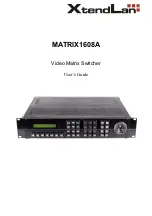
ProSafe 7000 Managed Switch Software Administration Manual, Release 8.0.3
DVMRP
30-1
v1.0, June 2010
Chapter
30
DVMRP
The Distance Vector Multicast Routing Protocol (DVMRP) is used for multicasting over IP networks
without routing protocols to support multicast. The DVMRP is based on the RIP protocol but more
complicated than RIP. DVRMP maintains a link-state database to keep track of the return paths to the source
of multicast packages.
The DVMRP protocol operates as follows:
•
The first message for any source-group pair is forwarded to the entire multicast network, with respect to
the time-to-live (TTL) of the packet.
•
TTL restricts the area to be flooded by the message.
•
All the leaf routers that do not have members on directly attached subnetworks send back prune
messages to the upstream router.
•
The branch that transmitted a prune message is deleted from the delivery tree.
•
The delivery tree, which is spanning to all the members in the multicast group, is constructed.
Configure DVMRP on a NETGEAR Switch
In this example, DVMRP is running on the switch A,B and C. IGMP is also running on the Switch C which
is connected to the host directly. After host sends a IGMP report to switch C. Multicast streams will be sent
from multicast resource to the host along the path built by DVMRP.
















































